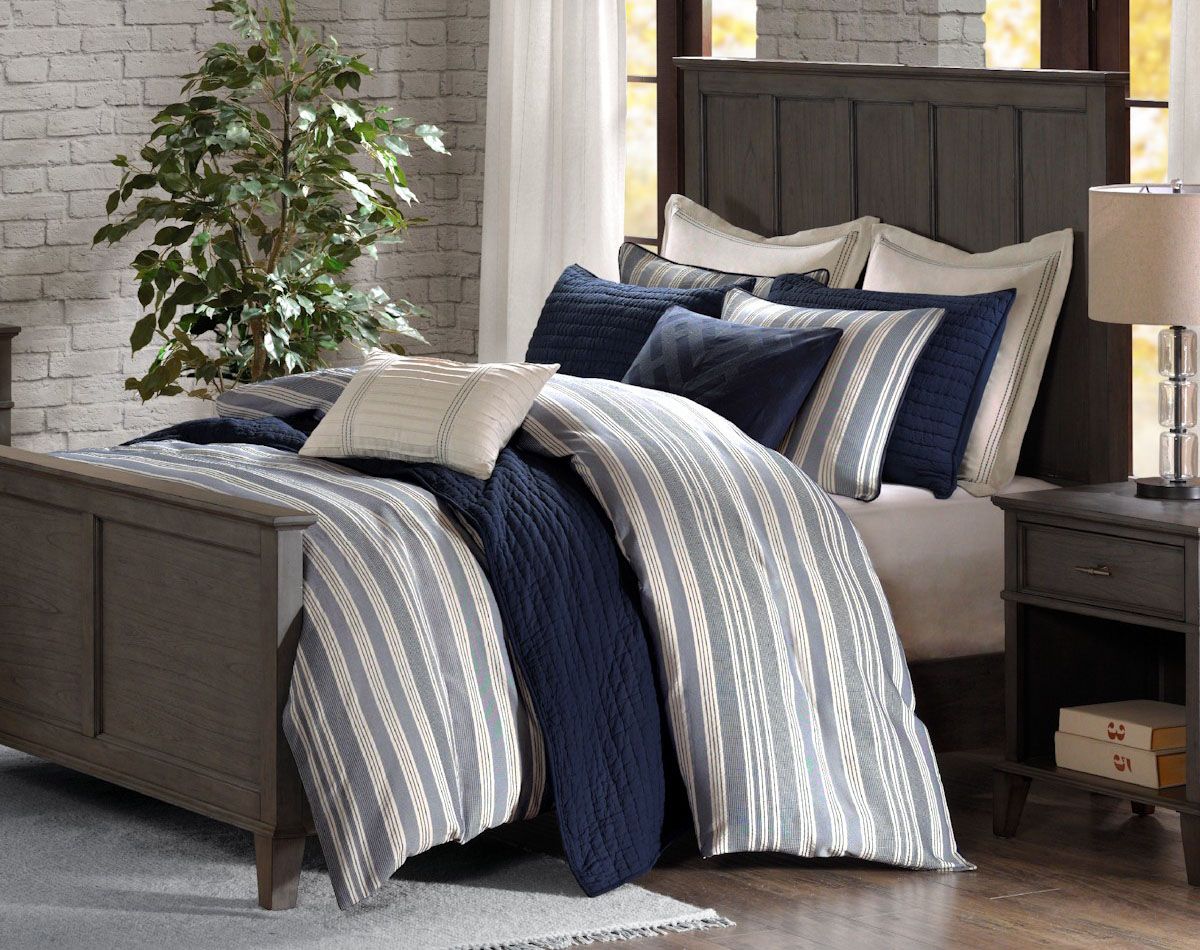Free Shipping on orders over $150 – *restrictions may apply
Top Layer Bedding for Winter: Comforters & Duvets
Nov 19, 2019

Deciding on top layer bedding can seem like a daunting task. There are so many options on the market today that it can be hard to understand the differences between them and know what is the best option for you. If you live in a colder climate, or one that has cold winters, it is important to select bedding that will keep you warm through the coldest nights. This article explores comforters and duvets and how to pick the right one for your climate.
Comforters and duvets are composed of two layers of fabric with a cotton, polyester, or down fill between them. Often this style of bedding is stitched in a box construction to keep the fill from moving around and bunching in one area. Comforters and duvets are designed to be used as the only layer of bedding, besides a top sheet, but can of course be layered as desired. There is often confusion about the difference between a comforter and a duvet. The concept is pretty much the same, but comforters are designed to be used directly on the bed. They come in endless colors, patterns, and designs and a variety of fabrics, most commonly cotton or microfiber polyester. Duvets must be paired with a duvet cover. The duvet itself is often just plain white, so that it can be used with duvet covers in any color or pattern. Both options have pros and cons. Comforters are perhaps the most simple style of top layer bedding since they are a single piece and can provide all the warmth needed. Duvets require the extra work of putting the cover on the duvet, but are easier to wash since the cover can be removed and washed without having to wash the entire comforter. Duvets also allow you to swap out the cover between seasons or when you are just looking to refresh your bedroom look, without having to buy a whole new comforter. When selecting a comforter or duvet, you have the option between a down or alternative down (polyester or cotton) fill. Both of these fill options are available in different weights, which determines how warm the comforter or duvet is. The material used for fill is often measured by its fill power, which is a good way to determine warmth. A fill power at or above 600 will be suitable for winter. Down has a higher fill power than alternative down materials, so less of it is required for the same level of warmth. This means that down comforters and duvets are typically lighter than ones filled with a down alternative. Another point to consider when deciding between fill materials, is how easy they are to wash. Most alternative down comforters and duvets are machine washable, but this is not always the case for down, which often must be dry cleaned. In addition, alternative down is generally hypoallergenic, making it a good option for people who suffer from allergies. Many people prefer comforters and duvets because they are a simple top layer bedding solution that makes making the bed an easy task. They are generally lighter than other bedding styles and can be very warm depending on the weight of the fill. Although they are usually used alone, comforters and duvets can be layered with blankets for extra warmth or weight. They are also available in a huge variety of colors and designs, suitable for any type of bedroom and style of home. To learn about quilts, bedspreads, and blankets, read part one of this bedding guide.
Sign Up For Our Newsletter
Stay up-to-date on all of our news, sales and design tips.
© 2025 Port & Bay. All Rights Reserved.Privacy PolicyAccessibility